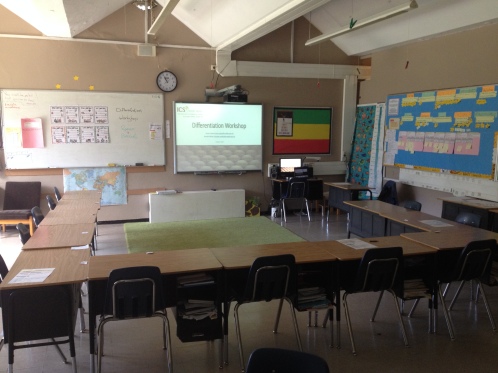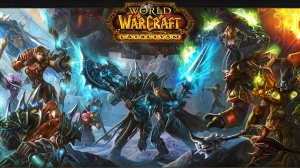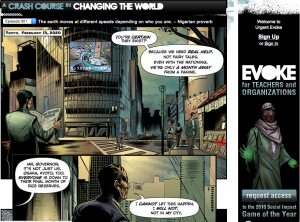Too often we stand in front of our students and lecture, recite familiar words that put them to sleep, make them work through endless boring worksheets, and quiz them to death.
With just a few simple tools, you can transform a day in your classroom into an interactive and fun experience for your students, and make your life easy by saving valuable time that would allow you to spend time with those who struggle or let computer algorithms calculate the results for you!
In this first post in the TechTalk series, I share 3 simple yet effective tools that will do just that:
1. TriCider– Visual collaborative decision making

TriCider is a convenient tool that would help you and your students suggest issues, offer pros and cons, and vote for the best idea. The best functionalities about TriCider are that sign-up is optional, and that sharing with students is extremely simple. TriCider also allows users to set and change deadlines, to subscribe to updates, and the creator of the document is able to edit all other users’ input.
I recently used TriCider with my students to discuss how sleeping arrangement would be decided upon in an upcoming field trip.

I added three “ideas”: Student choice, teacher choice, and a combination of the two, and one student added “Teacher choice, then student” (smart girl!). Then, on their laptops, students added arguments for and against each option individually. When we all added our pros and cons, students were ready to vote. It all took about 20 minutes, and the discussions around each idea and arguments were insightful, and allowed for even the quietest students to have a voice!
Easy decision making. Creative and collaborative.
Collect ideas, discuss and vote. That’s how tricider works. Your team will make decisions faster without meetings or calls. Innovative solutions arise because everyone can contribute ideas and vote. Whether with friends or clients: taking advantage of all the opinions and ideas to find the best solution has never been easier.
2. GoFormative– Interactive Worksheets

GoFormative has the capacity to turn your classroom into a paperless one! All you have to do is upload a worksheet (as Google Doc, PDF, , and then add buttons on the sheet, which would offer more information (through videos, online tutorials, etc.), quiz students (through multiple answers or typed response), or even show how they solve problems! You can then share it with your students using a quick code. Once done, all of their work is saved, collated, and ready for you to use! What makes this an even more convenient tool is that you can view their work while they complete it, and even leave comments on their work. And you know what? It’s FREE for teachers and students!!!
On their blog you can find not only information about the site, but also great resources, such as pre-made exit tickets.
Here is a short tutorial video:
If you need more details about GoFormative, here is a lengthy and detailed video created by a teacher.
3. Google Forms– Making quizzes out of videos.

By now, everyone should know about Google Forms and how convenient they can make our lives. So to save everyone’s time, I will just touch upon how simple it can be for teachers to create a video quiz which would automatically collate responses and analyze data for us. This is a great way to flip or blend your classroom! The only thing you need to do is log onto Google, create a form, embed a YouTube video in it, and add questions about the video, like the one I made below.

The cool thing about Google Forms is that they automatically create a spreadsheet to record responses. After you sent the link to your students and they completed the quiz, you click “View Responses” (a tab in the menu at the top of the form). Doing so would open a spreadsheet (a Google Sheet), and voila! All the responses are beautifully organized in front of you:
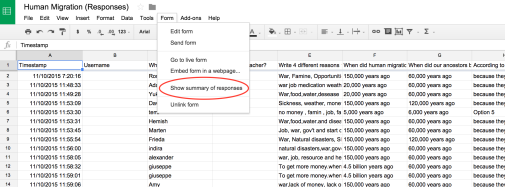
What’s even cooler, is that if you click the “Show summary of responses” (circled in red above), it will magically display the data in a convenient view for your analysis!
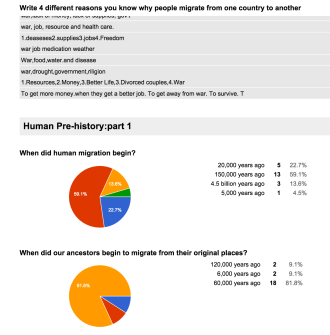
For the more advanced and tech-savvy, Google Sheets Add-Ons, such as SuperQuiz, Flubaroo or Doctopus, can very easily grade quizzes for you, and even send customized e-mails to your students or their parents with detailed feedback about their work. The folks at Google and their third party developers make the impossible not only possible, but shockingly simple!
So… What are you waiting for? Get going! Make your classroom the kind of classroom all students want- fun, interactive, and differentiated!
If you have any questions about any of these tools, or would like explanations or tutorials about any other educational tool, please let me know by leaving comments.
If you have any questions about any of these tools, or would like explanations or tutorials about any other educational tool, please let me know by leaving comments.

